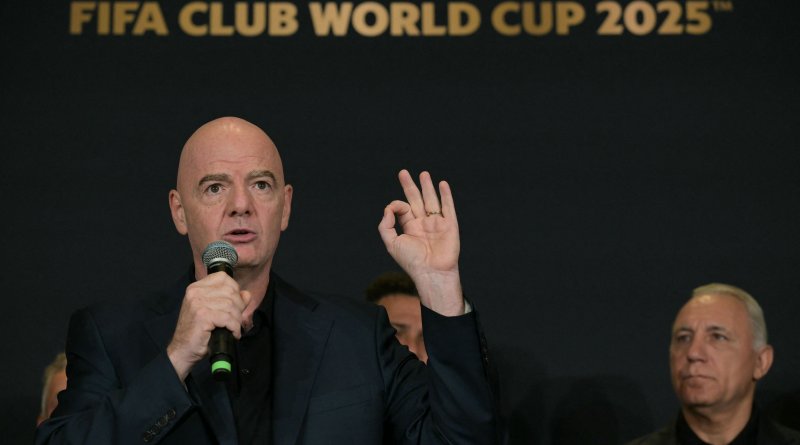2026 World Cup to Rely on Roofed Arenas for Heat Relief
2026 World Cup organisers are mapping out an unprecedented plan to stage daytime matches almost exclusively inside roofed, air-conditioned venues across North America, FIFA president Gianni Infantino revealed during a media briefing in Manhattan this week. The strategy is designed to shield players, officials, and supporters from the sweltering summer temperatures expected in June and July 2026.
How the 2026 World Cup will beat the heat
Infantino confirmed that tournament schedulers “will definitely use these stadiums during the day,” referring to the handful of U.S. and Mexican arenas with retractable or fixed covers. While evening kick-offs remain viable in open-air sites, FIFA’s technical team has decided that early afternoon fixtures should happen where shade, airflow and modern cooling systems can guarantee on-pitch safety and a consistent broadcast product.
Lessons learned from the Club World Cup
Severe thunderstorms, flash-flood warnings and oppressive humidity hampered this summer’s FIFA Club World Cup in the United States. Matches were delayed, training sessions rearranged, and visiting coaches voiced frustration at energy-sapping conditions. According to Infantino, the difficulties offered “a free stress test” for the 2026 World Cup, accelerating conversations about infrastructure and contingency planning.
Which venues meet the requirements?
Only four of the 16 confirmed host stadiums currently possess permanent roofs with integrated air-conditioning:
• AT&T Stadium (Arlington)
• SoFi Stadium (Inglewood)
• Mercedes-Benz Stadium (Atlanta)
• NRG Stadium (Houston)
FIFA’s operations unit is pushing other host cities to retrofit shading solutions or introduce upgraded misting and ventilation technology. Mexico’s Estadio BBVA in Monterrey, for example, is studying a lightweight canopy addition, while Toronto’s BMO Field will expand seating and explore modular shade structures.
Technology behind covered stadiums
Modern roof panels are typically constructed from PTFE-coated fiberglass or ETFE membranes, materials capable of reflecting infrared radiation while allowing natural light to penetrate. When paired with high-volume, low-speed fans and chilled-water cooling coils beneath seating tiers, the temperature on the pitch can drop by as much as 10°C compared to outside conditions. These efficiencies reduce player fatigue, lower injury risk and—crucially for broadcasters—maintain a predictable spectacle.
Environmental considerations
Some critics argue that running massive HVAC systems clashes with FIFA’s stated sustainability goals. Tournament organisers, however, contend that energy output will be offset by on-site solar arrays, smart building automation and certified renewable power credits. “We can protect human health and still hit our carbon targets,” insisted Federico Rojas, a consultant for World Cup Green Legacy.
Player welfare at the core of 2026 World Cup planning
Leading unions FIFPRO and the Professional Footballers Association have long lobbied for stricter heat protocols after multiple incidents of heat-related illness at major competitions. The 2026 World Cup medical handbook will incorporate Wet Bulb Globe Temperature (WBGT) thresholds, mandatory cooling breaks and advanced hydration monitoring. Covered stadiums, says Infantino, “are the first line of defence” and will help avoid last-minute schedule disruptions.
Impact on broadcasters and global audiences
Daytime kick-offs inside controlled environments open the door for more viewer-friendly slots in Asia, Africa and Europe. Rights-holding networks welcome the prospect of games starting between 13:00 and 16:00 local time, aligning with prime-time windows overseas. The result is likely to be record audience figures and stronger commercial returns for sponsors, who also appreciate the protection from weather-related signage damage.
Financial implications for host cities
Installing retractable roofs can cost anywhere from $200 million to $400 million. Municipal authorities argue that the long-term gains—concerts, conventions and year-round sporting events—justify the outlay. Arlington’s AT&T Stadium, for instance, recouped its construction investment within a decade through non-NFL bookings alone. The same blueprint, city planners believe, can revitalise surrounding hospitality sectors and create lasting jobs.
Potential scheduling challenges
Not every knock-out match can be squeezed into roofed facilities. FIFA’s current model anticipates that at least a quarter of the tournament’s 104 matches will remain in open-air stadiums, particularly in cooler northern markets such as Vancouver or East Rutherford. To manage risk, organisers will allocate those games to late-evening slots, with emergency heat-delay windows built into the broadcast grid.
What players and coaches are saying
Chelsea manager Mauricio Pochettino, whose side wilted in humid conditions during July’s Club World Cup semi-final, praised the initiative. “Anything that keeps the tempo high is a gift for football,” he told Goal. Paris Saint-Germain’s Kylian Mbappé added that consistent climates help reduce cramping and muscle tears, “so we can focus on our football, not the thermometer.”
Fans welcome comfort and accessibility
Supporters’ groups across CONCACAF have long demanded better shade options in summer tournaments. Retractable roofs promise cooler concourses, shorter concession lines and improved accessibility for elderly and disabled spectators. Travel agencies also anticipate smoother itineraries, as covered stadiums are less susceptible to weather-related transportation delays.
Our take
FIFA’s pivot toward climate-controlled arenas for the 2026 World Cup feels both pragmatic and inevitable. The expanded 48-team format leaves little margin for postponements, and consistent playing conditions protect everyone involved. While purists may lament the loss of sunlight-bathed matches, the modern game’s commercial and welfare realities make roofed stadiums the sensible play. If the governing body delivers on its sustainability promises, North America could set a new benchmark for mega-event climate management.
Your global gateway to nonstop football coverage:
Goal Sports News
Share this content:
